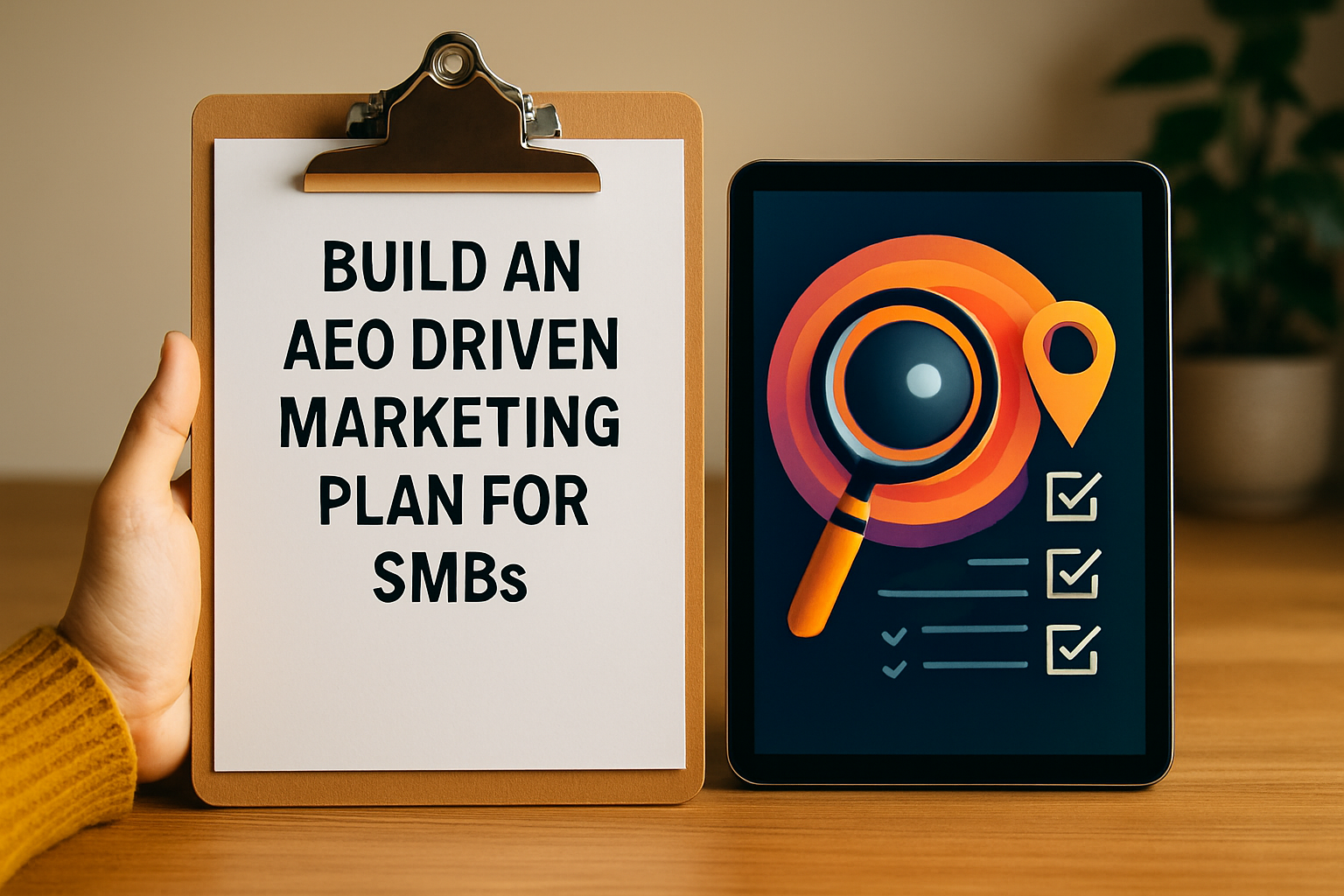Understanding Lead Conversion Rates: A Simple Guide

Every business dreams of turning interested prospects into loyal paying customers. Yet, research shows that only about 20 out of every 100 leads actually convert into sales. Surprising, right? Most companies chase more leads without stopping to realize that tweaking their conversion rate can have a bigger impact than pouring money into ads. If you want real growth, focusing on this simple number could change everything.
Table of Contents
- What Are Lead Conversion Rates And Their Importance?
- Why Lead Conversion Rates Matter For Business Success
- How Lead Conversion Rates Function In The Sales Process
- Key Factors Influencing Lead Conversion Rates
- Real-World Applications Of Lead Conversion Rate Analysis
Quick Summary
| Takeaway | Explanation |
|---|---|
| Lead conversion rates gauge sales success. | They measure how effectively prospects become paying customers, indicating business health and marketing effectiveness. |
| Optimize marketing based on conversion analysis. | Understanding which channels yield the best leads helps allocate resources for maximum ROI. |
| Focus on lead quality for better outcomes. | High-quality leads demonstrate genuine interest and fit your customer profile, increasing conversion likelihood. |
| Understand the sales pipeline stages. | Tracking conversion rates at each stage helps identify bottlenecks and refine the sales process, improving customer journey. |
| Continuous monitoring drives long-term growth. | Regularly analyzing and improving conversion rates keeps businesses responsive to market changes and customer needs. |
What are Lead Conversion Rates and Their Importance?
Lead conversion rates represent the percentage of potential customers who transform from interested prospects into actual paying customers. This critical metric allows businesses to measure the effectiveness of their marketing and sales strategies, revealing how successfully they attract and convince potential clients to make a purchase.
Defining Lead Conversion Rates
At its core, a lead conversion rate tracks the journey from initial contact to final sale. For service-based businesses and entrepreneurs, this means calculating the proportion of leads that progress through your sales funnel and ultimately become paying customers. Small Business Administration research indicates that understanding this metric is fundamental to strategic business growth.
The calculation is straightforward: Divide the number of converted leads by the total number of leads and multiply by 100. For instance, if you receive 100 potential leads and 20 become paying customers, your conversion rate would be 20%.
Why Conversion Rates Matter
Conversion rates are more than just numbers. They provide crucial insights into:
- The effectiveness of your marketing strategies
- The quality of leads generated
- Potential bottlenecks in your sales process
- Return on investment for marketing campaigns
By closely monitoring conversion rates, businesses can identify areas for improvement, optimize their sales approach, and allocate resources more efficiently. A low conversion rate might signal the need to refine marketing messages, improve lead qualification processes, or enhance the overall customer experience.
Understanding and improving lead conversion rates is not about manipulating numbers but creating genuine value that resonates with potential customers. It requires a holistic approach that combines targeted marketing, compelling value propositions, and a deep understanding of customer needs.
Why Lead Conversion Rates Matter for Business Success
Lead conversion rates are more than statistical metrics. They serve as critical performance indicators that directly influence a business’s financial health, strategic decision making, and long term growth potential. Understanding how these rates impact overall business success can transform how entrepreneurs and service providers approach their marketing and sales strategies.
Financial Performance and Resource Allocation
Converting leads into paying customers represents the most direct path to generating revenue. Harvard Business Review emphasizes that businesses spend significantly more acquiring new customers than retaining existing ones. By tracking conversion rates, companies can optimize their marketing spend and focus resources on strategies that deliver the highest return on investment.
Companies with robust conversion strategies typically experience:
- Lower customer acquisition costs
- Higher profit margins
- More predictable revenue streams
- Enhanced operational efficiency
Strategic Business Intelligence
Lead conversion rates provide granular insights into the effectiveness of marketing channels, sales approaches, and customer engagement strategies. These metrics help businesses identify strengths and weaknesses in their sales funnel, enabling data driven improvements that can significantly impact overall performance.
By analyzing conversion rates across different touchpoints, businesses gain a comprehensive understanding of:
- Which marketing channels generate the most qualified leads
- What communication strategies resonate most with potential customers
- Where potential customers drop off in the sales process
- How to refine targeting and messaging for better results
Long Term Business Growth
Consistent monitoring and improvement of lead conversion rates are fundamental to sustainable business expansion. Successful businesses view these rates not as static numbers but as dynamic indicators of their market adaptability and customer understanding.
Improving conversion rates requires a holistic approach that combines continuous learning, customer feedback, and agile strategy adjustment. This approach ensures that businesses remain responsive to changing market conditions and evolving customer preferences.

How Lead Conversion Rates Function in the Sales Process
Lead conversion rates operate as a systematic approach to tracking and improving how potential customers progress through a business’s sales pipeline. This mechanism enables organizations to understand and optimize each stage of customer acquisition, transforming potential interest into actual sales.
The Sales Pipeline Stages
EdX Business Learning highlights that successful lead conversion involves tracking movement through multiple interconnected stages. Typically, these stages include:
- Initial contact or lead generation
- Qualification and assessment
- Engagement and nurturing
- Proposal or presentation
- Closing the sale
Each stage represents a critical checkpoint where potential customers can either progress forward or drop out of the sales process.
Here is a table outlining the typical stages of the sales pipeline and their role in lead conversion, offering a structured view of the conversion journey.
| Sales Pipeline Stage | Description | Conversion Focus |
|---|---|---|
| Lead Generation | Initial contact with potential customers | Attract and identify interested prospects |
| Qualification | Assessing prospect fit and readiness to buy | Filter for high-potential opportunities |
| Engagement & Nurturing | Building relationships and providing information | Increase interest and address objections |
| Proposal/Presentation | Presenting tailored offers or solutions | Demonstrate value and encourage decision |
| Closing the Sale | Finalizing the transaction and securing commitment | Turn prospects into paying customers |

Businesses track conversion rates at each stage to identify potential barriers and optimize their approach.
Tracking and Measurement Mechanisms
Converting leads requires a structured approach to measurement. Businesses use various tools and techniques to monitor how prospects move through their sales funnel. Key measurement strategies include:
- Implementing customer relationship management (CRM) systems
- Using analytics to track user behavior
Conversion Rate Calculation: Businesses calculate conversion rates by dividing the number of leads that successfully complete a stage by the total number of leads entering that stage. This provides a clear percentage indicating the effectiveness of each sales interaction.
Optimization and Continuous Improvement
Successful lead conversion is not a static process but a dynamic strategy of continuous refinement. By analyzing conversion rates, businesses can identify specific areas requiring improvement. This might involve adjusting marketing messaging, refining lead qualification criteria, or enhancing sales team training.
The goal is not just to increase conversion rates but to create a more responsive, customer centric sales approach that genuinely understands and addresses potential customer needs.
Key Factors Influencing Lead Conversion Rates
Lead conversion rates do not emerge randomly but result from carefully orchestrated business strategies and nuanced interactions between marketing efforts, sales processes, and customer expectations. Understanding the critical factors that drive successful conversions can help businesses develop more targeted and effective approaches.
Lead Quality and Targeting
Small Business Administration research emphasizes that the quality of leads significantly impacts conversion potential. Not all leads are created equal, and businesses must focus on attracting prospects most likely to become paying customers.
Key characteristics of high quality leads include:
- Demonstrable need for the product or service
- Adequate financial capacity to make a purchase
- Alignment with the business’s ideal customer profile
- Active interest and engagement with the company’s offerings
Communication and Value Proposition
Effective communication plays a pivotal role in transforming potential leads into committed customers. The clarity, relevance, and persuasiveness of a business’s messaging can dramatically influence conversion rates.
Critical communication elements include:
- Clear articulation of unique value propositions
- Addressing specific customer pain points
- Building trust through transparent and consistent messaging
- Personalizing communication to match customer preferences
Sales Process and Customer Experience
The design and execution of the sales process directly impact a lead’s likelihood of converting. Businesses must create smooth, intuitive pathways that reduce friction and make purchasing decisions feel natural and low risk.
Key aspects of an optimized sales process include:
- Minimal steps between initial contact and purchase
- Responsive and helpful customer support
- Easy to understand pricing and service offerings
- Multiple convenient purchasing options
Successful lead conversion is not about aggressive sales tactics but about creating genuine value and demonstrating how a product or service can meaningfully improve a customer’s life or business operations.
The following table summarizes key factors that influence lead conversion rates, providing a clear overview of how each aspect impacts overall business success.
| Factor | Description | Impact on Conversion Rate |
|---|---|---|
| Lead Quality and Targeting | Attracting prospects who closely fit the ideal customer profile and demonstrate genuine interest | High-quality leads are more likely to convert |
| Communication & Value Proposition | Clear, relevant, personalized messaging that addresses specific pain points | Effective communication increases trust and conversions |
| Sales Process & Customer Experience | Smooth, responsive, and intuitive sales journey with minimal friction | Streamlined processes make purchase decisions easier and faster |
| Alignment with Customer Needs | Understanding and fulfilling actual customer needs | Meeting real needs increases conversion likelihood |
| Financial Capacity | Ensuring leads have sufficient resources to make a purchase | Leads with purchasing power are more likely to convert |
Real-World Applications of Lead Conversion Rate Analysis
Lead conversion rate analysis transforms raw data into actionable business intelligence. By systematically examining how potential customers interact with business offerings, organizations can develop precise strategies that dramatically improve their sales performance and operational efficiency.
Marketing Channel Optimization
Small Business Administration experts emphasize that understanding conversion rates across different marketing channels helps businesses allocate resources more effectively. Each marketing channel performs differently, and conversion rate analysis reveals which platforms generate the most valuable leads.
Businesses can leverage these insights by:
- Identifying high performing marketing channels
- Redirecting budget from low converting platforms
- Developing targeted strategies for specific channels
- Creating more precise audience segmentation
Customer Journey Mapping
Conversion rate analysis provides a granular view of how potential customers move through the sales funnel. This understanding allows businesses to identify and eliminate potential friction points that might prevent leads from becoming paying customers.
Key benefits of customer journey mapping include:
- Discovering drop off points in the sales process
- Understanding customer decision making patterns
- Developing more intuitive user experiences
- Creating more personalized engagement strategies
Predictive Business Planning
By tracking conversion rates over time, businesses can develop more accurate forecasting models. These insights enable more strategic decision making across multiple business functions, from sales and marketing to product development and resource allocation.
Predictive analysis helps businesses:
- Anticipate revenue potential
- Set realistic growth targets
- Understand seasonal variations in lead generation
- Develop more resilient business strategies
Ultimately, lead conversion rate analysis is not just about numbers. It is a comprehensive approach to understanding customer behavior, refining business strategies, and creating more meaningful connections with potential clients.
Ready to Turn More Leads into Paying Customers Faster?
If you found yourself frustrated by stalled sales or uncertain about the true impact of your marketing, you already know what lead conversion rates mean for your business. The article explained why tracking conversion rates is essential for revealing bottlenecks and maximizing results. But even with knowledge, many service-oriented businesses fall into the trap of juggling multiple tools, reacting slowly to leads, and missing out on crucial customer touchpoints. This creates missed opportunities, wasted resources, and ultimately lost revenue. Imagine having all of your key conversion activities—payment processing, scheduling, lead nurturing, reputation management, and AI-powered chat—working together seamlessly.

Stop losing leads at critical moments. Authority Echo offers an all-in-one SaaS solution designed to boost conversion rates and simplify your operations. With features built to address lead generation, nurturing, fast customer response, and real-time tracking, you can finally turn marketing insights into measurable results. Visit Authority Echo now and discover how you can increase conversions, earn faster payments, and spend less time stuck in admin. Try it today for instant access to automation that helps you grow smarter and scale with confidence.
Frequently Asked Questions
What is a lead conversion rate?
Lead conversion rate is the percentage of potential customers who become actual paying customers, indicating the effectiveness of your marketing and sales strategies.
How do you calculate lead conversion rates?
To calculate the lead conversion rate, divide the number of converted leads by the total number of leads and multiply by 100. For example, if you have 100 leads and 20 convert to customers, your conversion rate is 20%.
Why are lead conversion rates important for businesses?
Lead conversion rates are vital as they provide insights into marketing effectiveness, lead quality, and potential bottlenecks in the sales process, allowing businesses to improve their strategies and optimize resource allocation.
What factors influence lead conversion rates?
Key factors influencing lead conversion rates include lead quality, effective communication of value propositions, and the overall design and execution of the sales process.




